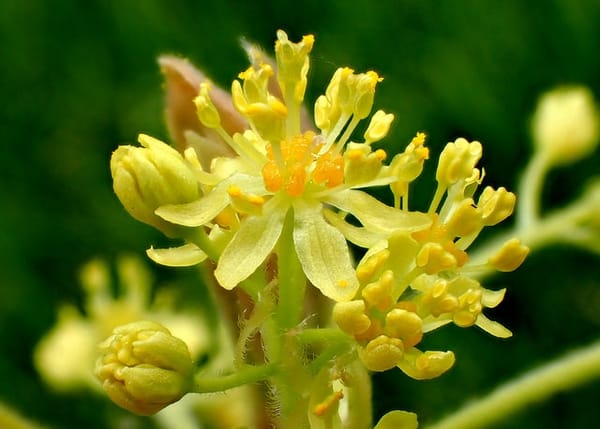Sassafras

The sassafras is a medium-sized, deciduous tree that grows in moist, open woods throughout North America. Young leaves are reddish-pink and turn green as they grow. Leaves change to yellow, orange or red in autumn. The bark is reddish-brown and deeply ridged. Fragrant, greenish-yellow flowers bloom in April to June. These trees can grow up to 100 feet tall!
Sassafras tree leaves often grow in three shapes: three-lobed, mitten-shaped and elliptical or egg shaped. Leaves are not particularly large, measuring between 3 to 7 inches long and up to 4 inches wide. When crushed or rubbed, sassafras leaves emit an intense blast of citrus. Scratching the bark will release a medicine-like aroma and chewing on a freshly skinned root will have you tasting licorice or root beer!

In late summer, trees produce small, dark blue, oval-shaped fruits on top of bright red, cup like stalks. Sassafras leaves are the host plant for spicebush swallowtail butterflies, but are also enjoyed by local deer. Small mammals and birds like the pileated woodpecker feast on this tree’s fruit, helping to disperse seeds. Trees begin producing seeds when they are 10 years old and will fruit once a year or every other year.
Native Americans valued sassafras for its medicinal purpose, using parts of the tree to treat fever, diarrhea, measles, coughs, indigestion, nausea and colds. Sassafras leaves can be used as a spice to add flavor to foods and soups. Oils extracted from the root bark of sassafras are used in the cosmetic industry for the manufacturing of soaps and perfumes as well as root beer and tea. Sassafras trees are known to repel mosquitoes and can survive up to 1,000 years in the wild under optimal conditions!

Next time you spot a sassafras tree while hiking the trails at the Dismal Swamp, impress your friends and family with a few interesting facts!
Source & Images:
https://www.softschools.com/facts/plants/sassafras_facts/1283/
https://www.ncwildflower.org/plant_galleries/details/sassafras-albidum
